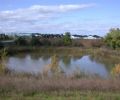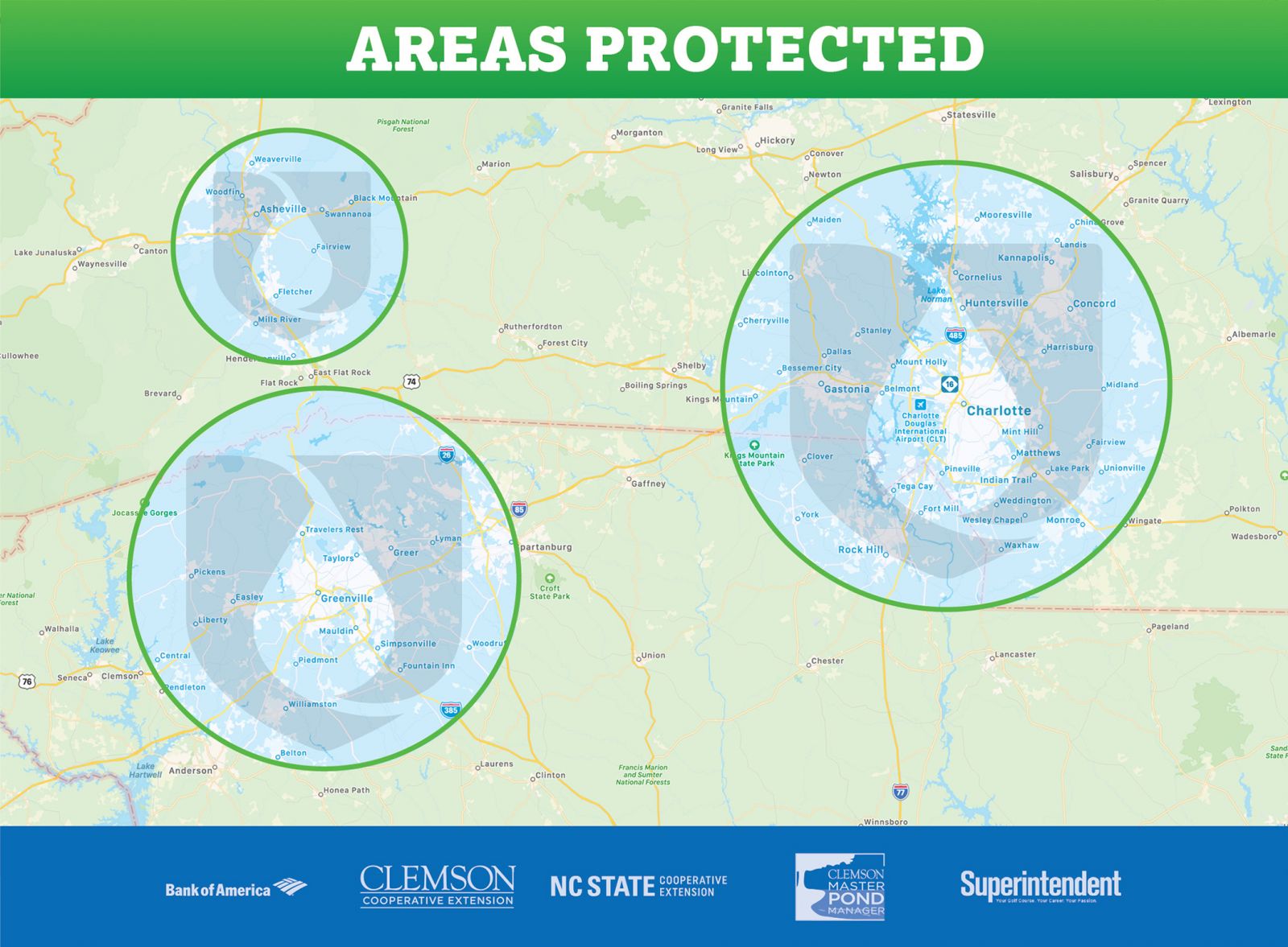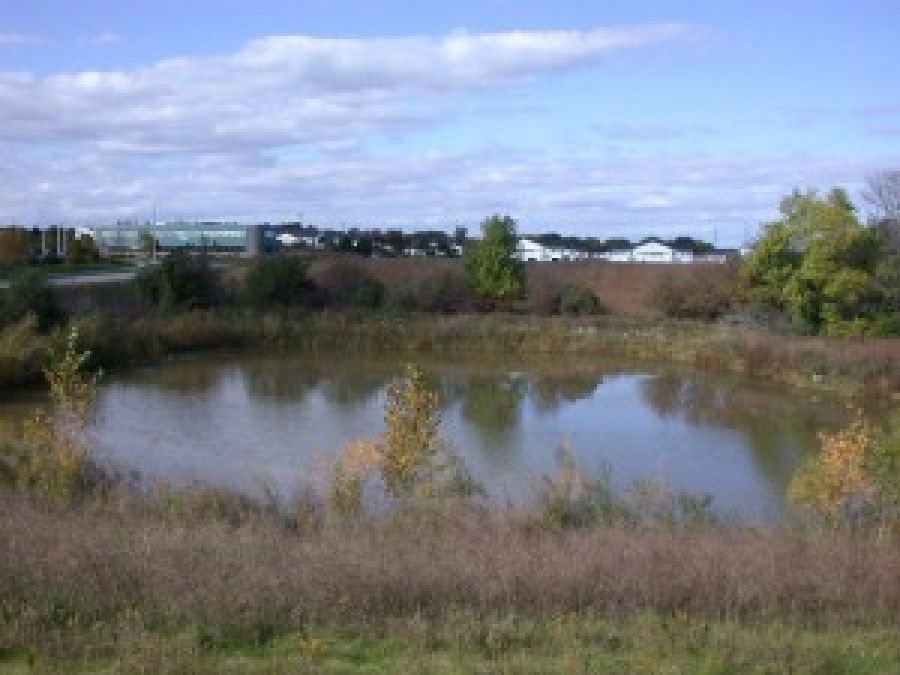
One of the greatest concerns that a developer has for any new construction project is managing precipitation that will collect on the site during storm events. To address this concern, engineers devote a considerable amount of time and expense modifying the landscape to drain properly.
In South Carolina, the most conspicuous drainage feature that developers include in their stormwater pollution prevention plans is the wet detention basin, more commonly referred to as a “residential” or “stormwater pond.”
Understood, residential ponds provide numerous services to the communities that drain to them. Most homeowners appreciate the beauty, serenity, and opportunity of contact with Nature that a pond adds to the landscape. Also, each pond can offer a wealth of recreational opportunities, including boating, fishing, interacting with wildlife, even the not so pleasurable prospect of losing a golf ball to a lateral water hazard.
Residential ponds are so influential to public opinion that homeowners are willing to pay a premium to live along their shores. Simply by its presence, a pond can benefit properties throughout the community by increasing marketability and value of the entire community. In this way, each pond affects the economy of the entire community, both for those that live along its shores and those distant from the pond.
“Each pond affects the economy of the entire community…both for those that live along its shores and those distant from the pond.”
While residential property owners have their vision of how the ponds serve the community, the engineers that design and install these drainage devices have entirely different intentions for the ponds. Residential ponds are constructed to serve three designed purposed.
First, they serve as sources for fill dirt to add relief to the landscape and raise foundations. Second, they are designed to suppress flooding by collecting excess stormwater runoff from impervious surfaces (roads, parking lots, rooftops, etc.) and releasing the storm surge to streams and rivers in a gradual and regulated manner.
Finally, residential ponds reduce water pollution by slowing polluted runoff and allowing time for undesirables to settle out of the water column before the water is released into our public waterways. Because these ponds help solve three of the developers’ most critical engineering problems, all the while improving the aesthetics and marketability of the development, stormwater ponds have become increasingly more frequent in recent years.
Despite numerous benefits, stormwater ponds frequently become the most problematic and costly components of a community’s infrastructure. Aquatic weeds, noxious odors, poor water quality, fish kills, failing shorelines, trash, nuisance biting flies, and overall reduced economic value are all problems that result from aging stormwater ponds.
All of these issues usually result from negligence spawned from the misconception that a stormwater pond is a natural thing that will maintain itself. Quite the contrary, a stormwater pond is an engineered device that requires regular maintenance to preserve its intended functions of flood control and pollution prevention.
“All these problems usually result…from the misconception that a stormwater pond is a natural thing that will maintain itself. Quite the contrary…”
It is important to note that the functionality and longevity of a stormwater pond are directly dependent on the land practices in the community. The water that fills each pond flows from the roads and lots in the development and carries with it the lifestyles of all of the residents in the community.
Exposed soils at construction sites, fertilizers, pet wastes, yard debris, pesticides, soaps and detergents, automotive fluids, and synthetic household chemicals are all carried in stormwater runoff to the ponds. Ultimately, this means that a community that works to minimize these pollutants in its stormwater runoff is making great strides to increase the life of the pond. In turn, such efforts reduce maintenance costs and preserve the flood control and pollution prevention services provided by each stormwater pond.
Stormwater Ponds and the Community – Coming to a consensus
A stormwater pond is a vital component of the community infrastructure, serving all members of the community. All properties in the community are part of the watershed that uses stormwater ponds for drainage.
This means that the activities of all property owners affect the ponds, regardless of whether the property is adjacent to the pond. Inversely, every homeowner can be affected by the ponds and potentially may suffer if the ponds threaten human health, cease to provide flood protection, or become unsightly.
Contrary to common belief, the stormwater ponds in a residential development are considered by local agencies to be the private property of the communities draining to them; therefore, the community is responsible for the health and function of each pond.
Of course, there are exceptions where local maintenance or publics works departments manage ponds, but the vast majority of stormwater ponds function or fail at the behest of the residents
Ponds are further complicated in communities where no governing association exists or where such an association exists but it takes no responsibility for maintenance of the ponds. In such a situation it is imperative that community members open a dialogue about the pond(s) and develop a management plan.
To best manage its stormwater ponds, a community must reach a consensus and prioritize the intended uses for its ponds. This process should begin with a community meeting where all property owners, even non- shoreline property owners, are allowed to have input and hear the concerns of others.
Frequently a pond is shared between developments or among a golf course and residential properties. In more dense areas of development, a pond may be shared among residents and commercial properties. The point to drive home is that every property, residential and commercial, in the watershed that drains into the pond is a stakeholder and should be represented at the meeting.
The community should list the desired uses and rank them in descending order. At the top of the list should always remain the services of flood prevention and pollution control because these are the only services that will result in property damage or threaten human health in the event of failure. Irrigation, recreation, appearance, marketability, and personal preferences are all secondary to these concerns.
“Flood prevention, pollution control…irrigation, recreation, appearance, marketability…Personal preferences are all secondary to these concerns.”
Once the community has prioritized its desired services, the residents should design an integrated management plan tailored to preserve those services. An integrated management plan involves community education, pollution prevention, weed control, shoreline stabilization, sedimentation removal & repair, and monitoring.
Integrated plans can be complicated, especially in diverse watersheds, but several service agencies can provide information and guidance. Such agencies include the Clemson Extension Service, your local Stormwater or Public Works Department, the Department of Natural Resources, the Department of Health and Environmental Control, and the Natural Resource Conservation Service. Also, some private consultants are available to help residential communities develop and implement a pond management plan.
Reaching a consensus about pond management can be quite complicated, but one resounding message can help the process. The water that falls on the community during a storm knows only the boundaries of the watershed and flows across that watershed regardless of property lines and jurisdictions.
By understanding the complexity of water and working to reach a consensus on how to manage the water, stormwater can be converted from what was once a major concern for a valuable resource that benefits all residents in the community. Aquatic Vegetation Control – What about water weeds
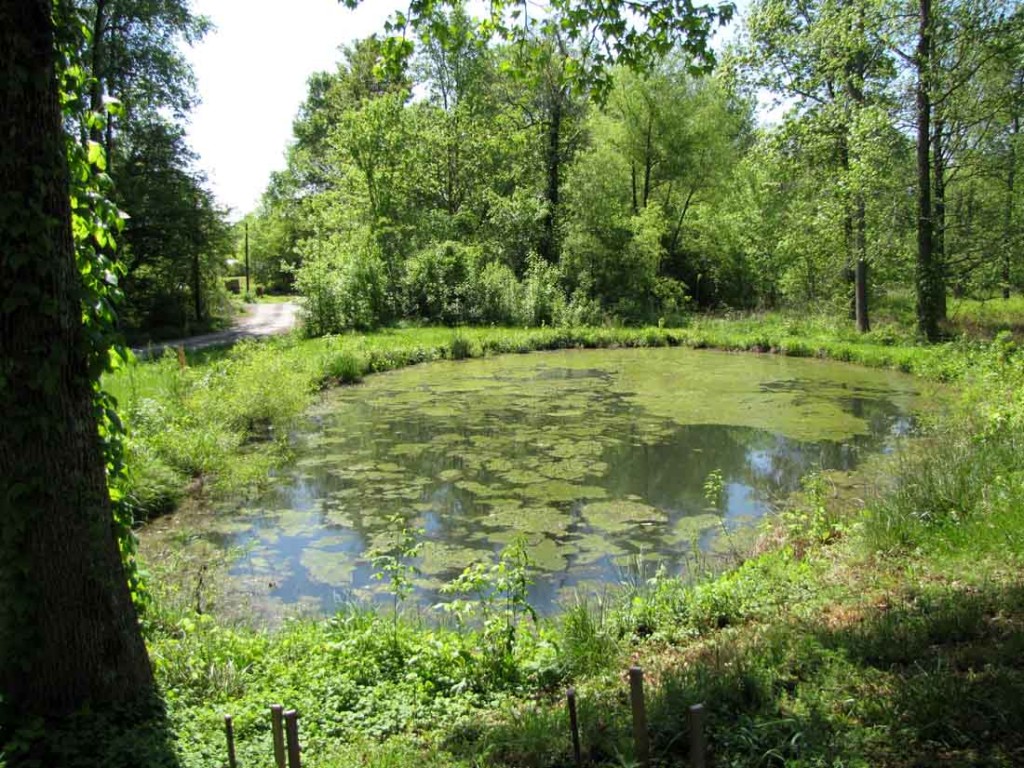
One of the greatest problems in pond management is controlling aquatic weed populations. Excessive submerged or floating weed growth can cause flooding, impair water quality, result in fish kills, augment biting fly populations, reduce land values, and impede recreation. To prevent these problems from occurring, the community should consider all available methods for keeping aquatic plants in check.
Aquatic plants are natural components of South Carolina’s freshwaters, but many of the most problematic weeds are not native to our waters. In moderation, native plants can enhance the beauty and function of a stormwater pond by filtering and oxygenating the water and providing shelter to fish and their forages.
On the other hand, excessive plant growth of native and exotic plants can alter pond structure and chemistry negatively. For this reason, aquatic plant populations should be controlled in stormwater ponds to prevent them from covering more than 10% to 15% of the pond surface. Remember, weed is a “plant out of place” by definition, which means that a plant is only a weed if you do not like it.
Weed control is a dynamic endeavor that requires a thorough knowledge of all of the methods available. For guidance, contact your local extension office. The extension office can help you identify the weed, the most critical part of controlling aquatic vegetation. Once the plant is identified, the extension office can help with developing an integrated pest management plan. The following description is a brief account of the parts of integrated pest management for aquatic weeds in stormwater ponds.
Education and prevention are the best way to avoid aquatic weed problems. Communities should consider signage and ordinances designed to prevent the release of exotic plants and animals into their stormwater ponds. Also, sources of nutrients that accelerate weed growth should be eliminated, or minimized at least. Excessive fertilizer use, feeding the fish/turtles/ducks/geese, yard debris, and pet wastes are all sources of excess nutrient loading in stormwater ponds.
Physical controls can reduce weed populations. Proper pond construction and sedimentation removal to restore depth will prevent many submerged weed problems. Removal by hand or machine can work for short durations but is very labor intensive.
Aquatic dyes are quite effective at slowing weed growth by shading submerged plants. Fountains and circulation can limit the growth of some microscopic algae. Draw downs can expose shallow submerged plants to desiccation and freeze air temperatures. Also, geotextile fabrics and mats may be laid in shallow areas over the pond bottom to prevent plants from taking root.
Biological controls can provide very cost effective long term management methods for controlling aquatic weeds. Triploid Grass Carp uproot and graze on most submerged plant species, providing effective control for many years.
Blue Tilapia feed voraciously on filamentous algae, but these tropical fish often do not survive winter temperatures in South Carolina. Both fish in combination will prevent most submerged aquatic weeds from becoming significant problems, but they will not control all species of plants.
Ultimately, chemical control can be used to eliminate remaining aquatic weeds. Chemical treatment should be considered mostly as the final defense. Aquatic herbicides are typically very expensive, can be toxic to aquatic and terrestrial plants and animals, can create resistant plant populations when used chronically, and require special licenses and equipment to apply.
On the other hand, aquatic pesticides, when applied correctly, can be very effective at managing weed populations with minimal impact to non-target species. Homeowners should never apply herbicides to stormwater ponds unless they possess a category five pesticide applicators license and have solicited the consent of the pond owners or managers.
Anyone who applies pesticides to a stormwater pond without license and consent is breaking the law and can suffer severe penalties under the law. A community that requires chemical treatment of its ponds must contract the work with a pesticide applicator licensed to apply aquatic pesticides.
“Anyone who applies pesticides to a stormwater pond without license and consent is breaking the law and can suffer severe penalties under the law.”
The most effective weed management strategies integrate several control methods into a single weed control plan. Physical, biological, and chemical controls are all used in concert to manage weed growth in the same ponds. Frequently, aquatic dyes and herbivorous fish provide sufficient control, but in some cases, chemicals and mechanical removal must also be used to keep weeds in check.
If you are considering integrating your pond management strategies, you should consult your Extension office or pond management professional because some strategies may not integrate well or may restrict intended uses for the pond. Most importantly, community education and prevention efforts must be included in the management plan to reduce the threat of new introductions and the impedance other control methods.
Fighting the Fillers – Sedimentation & sedimentation removal
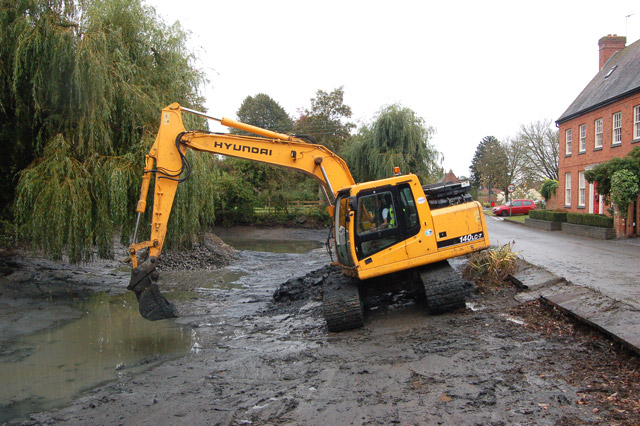
For stormwater ponds, sedimentation removal is not a possibility; it is inevitable. Contrary to most assumptions, residential stormwater ponds are usually quite shallow, rarely exceeding 6 feet in depth. Over time, the accumulation of dirt and debris washing from the land and settling from the atmosphere will fill these already shallow basins, reducing their abilities to prevent flooding and control pollutants.
Sediment accumulation also exacerbates aquatic vegetation and water quality problems. To maintain these services and to prevent pond failure, sediment and debris must be removed from the pond periodically.
“For stormwater ponds, sedimentation removal is not a possibility; it is inevitable.”
In well established and forested watersheds where the little soil is exposed to erosion and shorelines are stabilized with robust, deep-rooted vegetation, a stormwater pond may function well for 30 years or more with little change in depth. On the other hand, in watersheds where active construction exposes soils to erosion and shorelines are stabilized by little more than turf grass, the stormwater pond may need sedimentation removed quite frequently, even annually.
Residents should be mindful of their contributions to sedimentation in stormwater ponds. Poor community hygiene allows foreign substances to enter the drainage network. Even if the homeowner resides on the other side of the community, the grass clippings, exposed soils, and litter that are washed away during storm events eventually take up space in the stormwater pond. If residents are mindful of what they release into the drainage network, they can prolong the life of their stormwater pond.
It can be difficult predicting how often a stormwater pond must have sedimentation removed. This frequency is highly variable because it is directly dependent on the size of the pond, the soil types, and the land practices in the community. Nevertheless, all stormwater ponds eventually need to have sedimentation removed to prevent them from becoming swamps.
The community should keep detailed records of the original construction plans for each pond to determine the engineer’s designed depth. Also, a metered stick should be sunk in the pond bottom to measure changes in sediment accumulation.
When a community decides to sedimentation removed their pond(s), the community must decide what to do with the spoils. Frequently, the developer designated an easement or specific area to deposit the excavated earth. If not, the community should designate such an area near to the pond because it will reduce costs dramatically. Some contractors can export the spoils from the community, but this will increase costs for the community.
Although South Carolina law places no restrictions on how the spoils should be handled, communities should recognize that the stormwater pond is a pollution control device, and the sediments in the bottom of the pond are full of compounds that have washed from the community.
The sediments may contain bacterial pathogens or hazardous chemicals that may cause illness in humans and pets or impair plant growth. Stormwater pond spoils should not be handled by residents nor used on residential properties until the spoils are shown to be free of pathogens and hazardous chemicals.
Shoreline Protection – Weighing the options
Stormwater ponds have inherently unstable shorelines. The banks of these ponds typically have steep slopes and are composed mostly of excavated fill dirt. They are battered by surface runoff and wave action and are subject to fluctuating water levels during and between storm events. Without proper stabilization, the banks undercut and slump into the pond eventually.
For the waterfront property owner, this amounts to losing valuable real estate to the depths of the pond, only to be excavated and taken elsewhere when the pond has sedimentation removed. Hence, it behooves the waterfront owner to stabilize the shoreline to preserve the land for which a premium was paid.
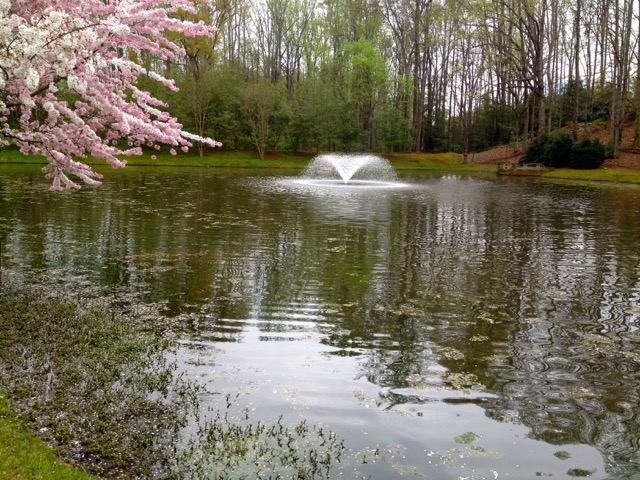
One of the greatest points of contention among waterfront owners is how to manage their respective shorelines. Some choose to lay sod and mow their turf to the water line because they like the openness, visibility, and manicured appearance. Others prefer engineered structures such as riprap and bulkheads because of an assumed reduction in maintenance and increase in longevity.
Still others choose to allow native vegetation to dominate the water’s edge. Of course, which method to be used is often determined by the Property Owners Association; however, in most cases, homeowners are afforded some leniency about their respective shorelines.
When weighing the various shoreline strategies, the homeowner should consider three questions, ranked in descending order.
1) Will my shoreline strategy prevent erosion and hold the soil in place? 2) Will it improve or degrade water quality? 3) How will it affect my pocket book?
All too often, the homeowner considers how it will look before these other questions, only to suffer severe erosion, aquatic weed growth, water quality problems, and expensive repairs at a later date. Considering these three questions, we can rank the shoreline stabilization strategies.
The most common strategy is using turf grass, mowed to the water line. For many years, this strategy had been recommended by regulating agencies. While turf can be relatively inexpensive to install, it can be costly to maintain, when one considers fertilizers, pesticides, and mowing. Most notably, turf provides very little structural support for a shoreline.
On steep slopes, turf is rapidly undercut and slumps. Even on gradual slopes, turf will eventually erode. Finally, turf is the shoreline strategy that will impair water quality the most. Water runoff from the lawn carries unused fertilizers, pesticides, and pet feces all of which cause severe water quality problems in the receiving pond.
Many property owners choose to erect retaining walls, bulkheads or riprap to stabilize their shorelines. When installed properly, these devices provide strong structural support for the shoreline but are expensive to install and maintain. Pesticides and machinery are necessary to prevent vegetation from damaging the integrity of these devices.
Also, these devices require costly repairs when they fail. The main concern with these types of engineered devices is that they provide little benefit to improved water quality. On the contrary, their construction can temporarily impair water quality as the shoreline is disturbed during construction.
A homeowner may choose to use vegetation to stabilize the shoreline. Such a strategy affords the homeowner many benefits not realized by the other shoreline strategies. Vegetated buffers can be created for little or no cost if the homeowner chooses to allow the shoreline to remain fallow where native vegetation prevails without hindrance.
For a more manicured look, a landscape design using select plants can satisfy most homeowners and community bylaws. The diversity of plant types allows the homeowner to have control over the appearance of the shoreline and to create an accent that is visually appealing and adds variety to the landscape. For the avid gardener, many shoreline plants have very showy flowers and textures. In this way, the vegetated buffer can become a property amenity that increases land value.
While some cost may be necessary to install a landscaped vegetated buffer, very little is needed for maintenance. Maintenance costs and labor will be reduced further if the homeowner uses mostly native vegetation that is adapted to the climate and soil types for the region. As compared to the turf, a vegetated buffer may require maintenance only once or twice a year and needs very little fertilizer or other soil amendments.
Vegetated buffers also provide structural support that is strong and sustainable. The deep roots of larger native plants hold soil and work to trap and accumulate sediment. Unlike bulkheads or riprap, plants have the remarkable ability to adapt to the location and changing environmental conditions. After a catastrophic event, native plants can repair themselves and repopulate damaged shorelines with little or no additional cost to the homeowner.
The greatest benefit of a vegetated buffer is its ability to preserve good water quality. The roots and shoots help slow runoff from lawns and impervious surfaces and trap nutrients and other compounds before they wash into the pond. The roots and thatch layer associated with plants harbor beneficial microbes that effectively moderate pollutants and harmful pathogens.
The crowns of shoreline plants shade the water, reducing heating of the water and guarding against low oxygen conditions that can cause fish kills and noxious odors. Also, shoreline vegetation, especially large trees, can baffle winds that are responsible for most turnover related fish kills.
An added benefit of a diverse and well-established buffer is that it will serve as a wildlife attractant and management tool. Attractive animals such as game fish, butterflies, and song birds can find forage and refuge in such a buffer.
The buffer also can serve as a deterrent to undesirable species such as domesticated geese and ducks, which augment water quality and shoreline erosion problems. The most common concern voiced about shoreline vegetation is that it harbors snakes and biting flies.
This misconception alone outweighs all other benefits for many homeowners and prevents them from considering shoreline vegetation. It is true that plants of all types provide habitat for such animals, but shoreline plants are no more attractive to nuisance animals than are other plants or structures in the yard.
If you are considering a vegetated buffer for your shoreline, consult with your Clemson Extension Office for advice about installation, plant choices, and maintenance. You should also review your HOA bylaws and local ordinances to determine policies established for pond easements if they exist.
No other shoreline management strategy offers the variety of benefits that are provided by vegetated shoreline buffers. The abilities of plants to prevent erosion and hold shorelines intact, to enhance water quality, to manage wildlife, and to improve the appearance and value of property, all at a modest cost for installation and maintenance, makes vegetated buffers the most dynamic and sustainable management tool available to shoreline property owners.
Water Quality in the Pond – The war best fought on the high ground.
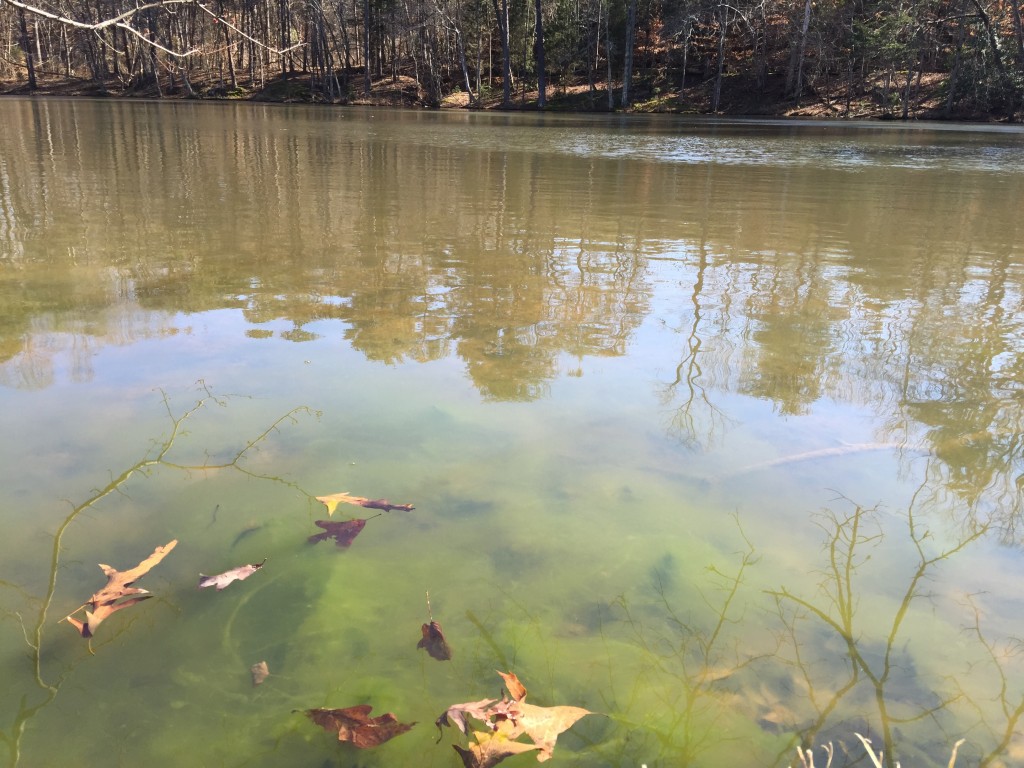
Nothing will detract from the value of a waterfront property more than poor water quality. Fish kills, noxious odors, algal blooms, and off-color water will deter a prospective buyer from considering your shoreline property as much as a faulty floor plan or a small kitchen might.
Even properties distant from the water will suffer if the ponds in a community are seen more as cesspools rather than as residential ponds. A perceived health concern with the water in a community will impair land values and public perception greater than almost any other factor.
On the other hand, maintaining good water quality in a stormwater pond is a difficult task. After all, one of the engineered purposes for each stormwater pond is pollution entrapment and remediation. Pollutants flowing from the land are trapped in these ponds by design, making the ponds into collectors of everything discarded by property owners in the community.
Exposed soils at construction sites, fertilizers, pet wastes, yard debris, pesticides, soaps and detergents, automotive fluids, and synthetic household chemicals are all carried in stormwater runoff to the ponds. So if a community wishes to combat a water quality problem in its ponds, it must fight that battle on the land where the pollutants originate.
Sure, there are some effective strategies for preserving water quality in the water. Fountains and aeration are wonderful tools for oxygenating and circulating water. They will guard against fish kills and reduce noxious odors in low oxygen waters.
They also can fight the growth of harmful algal blooms. In addition to aerators, there are several filtering devices that can be used. Ultraviolet filters have proven to be very effective at killing planktonic algae and bacterial pathogens, but these devices may be expensive to install and maintain. UV filters also can kill beneficial plankton and microbes.
One good way of maintaining water quality in the water is allowing some native plants to remain in the water. Native vascular plants help filter water and absorb excess nutrients that would otherwise be available to noxious algae.
Aquatic plants also provide habitat for the beneficial growth microbes that further remediate pollutants. Of course, in excess aquatic plants of any type can reduce water quality, so it is important to control aquatic plant growth to less than 15% coverage of the pond.
The best way to win any battle is to take the high ground first, and fighting water-borne pollutants is no different. This means adopting land use strategies that will reduce pollutant loading in the drainage network. Unfortunately, no single strategy will effectively stop all pollutant types, so a community must consider multiple strategies to reduce multiple pollutant sources.
Nutrients are often the most common pollutant in stormwater ponds, as evidenced by the excessive growth of algae experienced by most communities through the growing season. Excess nutrients originate from excessive fertilizer use, improperly discarded yard waste, and pet and animal feces.
To limit the over use of fertilizers, residents should test their soil before applying. Clemson Extension can provide this service. To learn more contact your local extension office. Quite often, lawn expenses can be reduced through a simple soil test. To combat nutrients from yard debris and pet waste, residents should consider composting these wastes in a protected place in the yard away from storm drains or pond shores.
The community also should curtail all fish/turtle/duck feeding practices. When a resident feeds these animals, he/she effectively fertilizes the pond as the animals defecate. Stopping feeding will eliminate an unnecessary nutrient source and encourage these animals to feed on other sources in the pond, effectively reducing nutrients existing in other forms.
Proper community hygiene will do wonders towards eliminating most other pollution sources. Of utmost importance, residents should be reminded that anything that enters a ditch or storm drain goes untreated to the nearest pond. Residents should discard automotive fluids, household chemicals, and used cooking oil at the local landfill or recycling convenience center rather than in the closest ditch or storm drain.
Car washing and home pressure washing are major sources of soaps and detergents in ponds. Homeowners should consider washing the vehicle in the yard or at a designated car wash that ties into municipal wastewater sewer, rather than allow the soapy rinsate to flow into the closest storm drain as it makes it way to the pond.
Despite a homeowner’s best efforts, there are still oils, sediment, and trash that wash from the roads and common areas in the community. To combat these sources, communities should consider placing inlet and storm drain protectors to stop pollutants before they are washed into the drain pipes that lead to the ponds. In some locations drop inlets can be protected using ornamental grasses and shrubs which will not only filter pollutants but also improve the appearance.
Other innovative devices can be used to trap pollutants before they enter the ponds. Rain gardens can be used on private properties and curb cuts. Silt fences and sediment traps can catch eroded sediments before they leave construction sites.
Homeowners can opt for pervious concrete or pavers for their driveways and walks. Rain barrels can trap rooftop runoff for landscape use, and proper plant and mulch selections can help gardeners use water wisely. Finally, waterfront owners should consider installing vegetated buffers along their shorelines to slow and filter runoff leaving their yards and entering the ponds.
Ultimately, the greatest defense against water quality problems in stormwater ponds is an educated community. Once made aware of a problem and shown the link between them and that problem, residents become invested in that issue and work to improve the situation.
An excellent way to educate residents is to erect signage around ponds and stencil storm drains to serve as constant reminders of the linkage between land practices and water quality. Community meetings to discuss pond problems and possible remedies also work well to keep citizens invested. Either way, an invested citizenship will be a community’s best defense against such a diffuse subject as nonpoint pollution and water quality impairments in stormwater ponds.
CONCLUSION
Water is the most dynamic substance on Earth, and managing it is a very complicated endeavor. Unlike any other natural resource, water is both subjective and objective and requires an understanding of Biology, Chemistry, Physics, Ecology, Sociology, Economics, Politics, History, and Local Culture.
Since stormwater ponds receive water from a community and are affected by every member of the community, they often become features of great controversy where all of a community’s grievances over water’s intricacies intersect. Discussing the concerns, reaching a consensus, and developing a community-wide management plan that integrates all feasible strategies is the best approach to protect the ecological and economic services provided by the ponds.
Only when each member of the community accepts personal responsibility for the stormwater leaving his/her property, will the ponds in a community transition from sources of contention to become valuable community resources.
HOA Stormwater Pond Management
And
HOA Stormwater Pond Management
Now serving Greenville SC, Spartanburg SC, Asheville NC, Charlotte NC, Winston-Salem NC, & Greensboro NC areas.
Get started. Become a member today!


